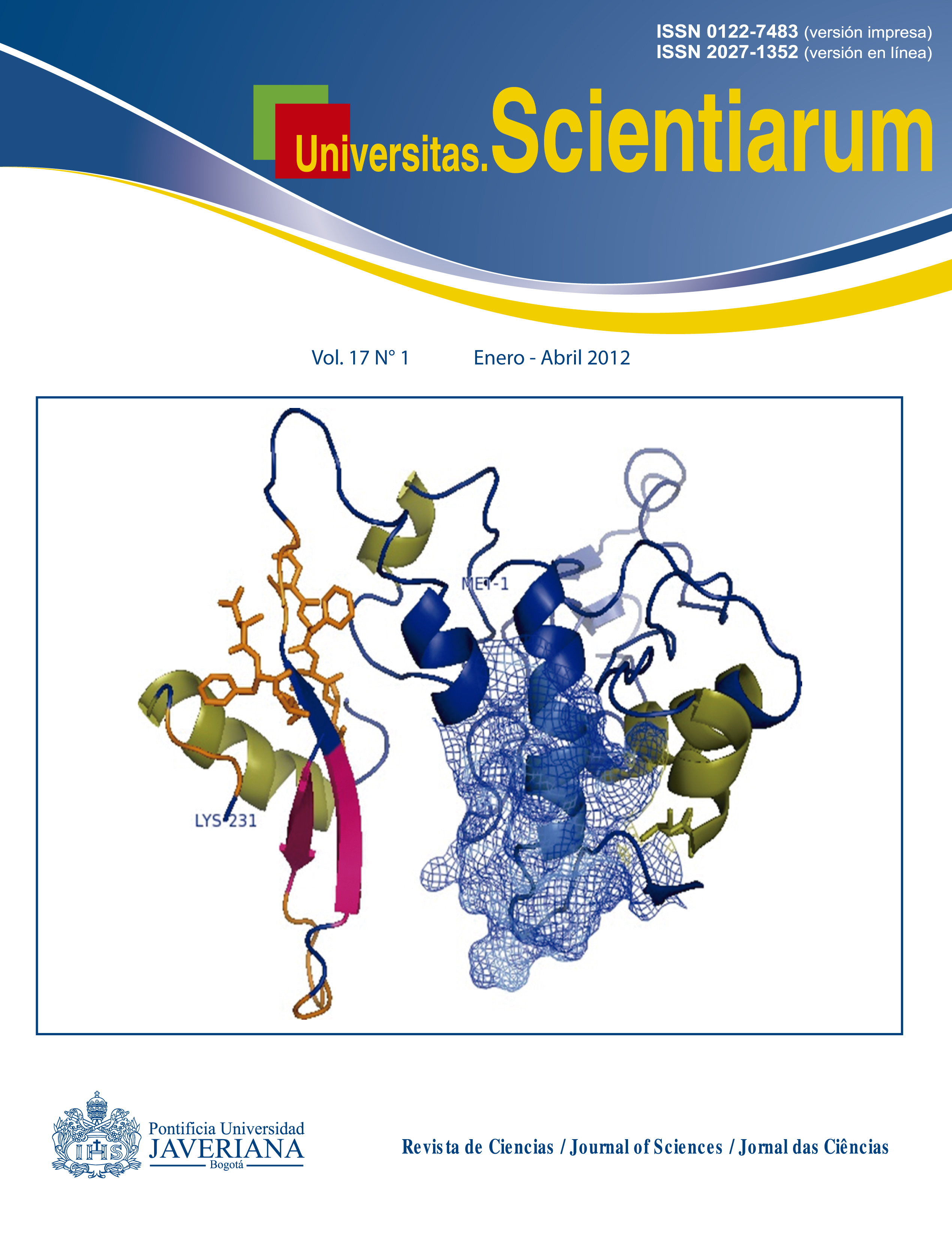Abstract
Objective. To design a complex culture media for the production of biomass and acid phosphatases from phosphate-solubilizing bacteria isolated from soil. Materials and methods. Phosphate-solubilizing bacteria were isolated from oil palm crop soil samples and selected on SMRS1 agar, which were then assessed with antagonism tests to verify their aptitude to form a co-culture. A Box-Behnken experimental design was applied toevaluate the effect of each one of the culture media components on the production of biomass and phosphatase enzymes at a laboratory scale. Finally, microbial growth and enzyme production curves were carried out in order to determine their production times. Results. Five phosphate-solubilizing bacterial strains were isolated and three of them were selected based on their solubilization indices.These Gram negative strains with bacillus morphology were identified as A, B and C; their solubilization indices were 2.03, 2.12, and 2.83, respectively. According to the ANOVA analyses for the Box-Behnken design, the only factor which had a significant effect on the phosphatase activity (p<0.01) was hydrolyzed yeast, and the formulation that generated the highest biomass concentration and phosphatase activity (p<0.01) contained 10, 15 and 2.5 gL-1 of phosphoric rock, sucrose and hydrolyzed yeast, respectively. After 24 hours of incubation at 100 rpm, the highest values of biomass and phosphatase activity were obtained: 11.8 logarithmic units of CFU and 12.9 phosphatase units. Conclusion. We determined that the culture media based on phosphoric rock 10 gL-1, hydrolyzed yeast 2.5 gL-1 and commercial sucrose 15 gL-1 was ideal for the production of biomass and phosphatases by the strains evaluated; likewise, we proved that the hydrolyzed yeast was the only factor significantly influential for the production of phosphatases.
Key words: bio-inoculants, phosphate solubilizing microorganisms, phosphatase activity, Box Behnken design.
Univ. Sci. is registered under a Creative Commons Attribution 4.0 International Public License. Thus, this work may be reproduced, distributed, and publicly shared in digital format, as long as the names of the authors and Pontificia Universidad Javeriana are acknowledged. Others are allowed to quote, adapt, transform, auto-archive, republish, and create based on this material, for any purpose (even commercial ones), provided the authorship is duly acknowledged, a link to the original work is provided, and it is specified if changes have been made. Pontificia Universidad Javeriana does not hold the rights of published works and the authors are solely responsible for the contents of their works; they keep the moral, intellectual, privacy, and publicity rights. Approving the intervention of the work (review, copy-editing, translation, layout) and the following outreach, are granted through an use license and not through an assignment of rights. This means the journal and Pontificia Universidad Javeriana cannot be held responsible for any ethical malpractice by the authors. As a consequence of the protection granted by the use license, the journal is not required to publish recantations or modify information already published, unless the errata stems from the editorial management process. Publishing contents in this journal does not generate royalties for contributors.



